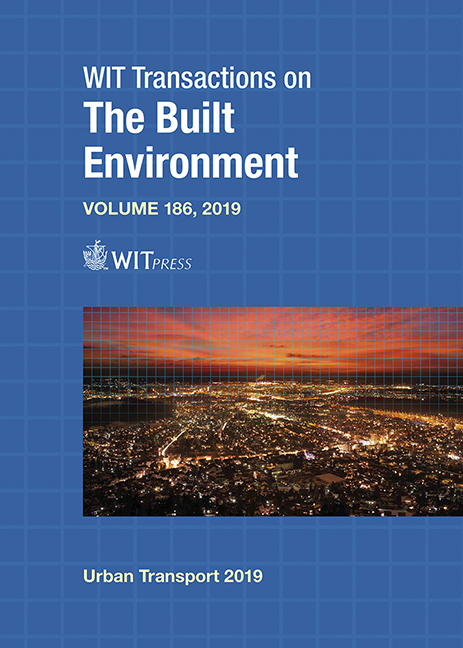EXPERIMENTAL TECHNIQUES AND NUMERICAL MODELS TO DETECT POLLUTANT EMISSION IN THE TRANSPORT SECTOR
Price
Free (open access)
Transaction
Volume
186
Pages
10
Page Range
37 - 46
Published
2019
Size
430 kb
Paper DOI
10.2495/UT190041
Copyright
WIT Press
Author(s)
GUIDO MARSEGLIA, CARLO MARIA MEDAGLIA, FRANCISCO ALONSO ORTEGA, JUAN A. MESA, DAVID CANCA
Abstract
In recent years, the growth of fossil fuel use and greenhouse gases emissions (GHGs) has been promoted by the population increase and development of the industry sector. Due to the increasing attention towards the effects of climate changes on quality of life, recent researches on pollutant formation processes have been developed in different sectors, especially in transportation. The last emission standards on pollutants impose limits on the dimensions and on the particle number of the particulate matter emissions, because of the highly dangerous effect on human health. To fight high concentrations of particulate matter (PM) emissions, a wide number of studies are addressed towards the definition of the most important parameters in effective production of particulate matter, especially in spark ignition engines. Physical processes such as mixture formation, engine operating parameters and fuel chemical properties strongly affect the soot formation in gasoline engines. The heat transfer process between the piston hot surface and the fuel gasoline during the post-injection phase is a key aspect of soot emissions for an engine. This paper is devoted to analyzing the fundamental parameters that are responsible for pollutant formation in the transport sector and the actual experimental and numerical techniques used to predict the environmental impact of engines.
Keywords
climate changes, pollutant, transportation, particulate matter emissions, experimental and numerical techniques





